
What Is Ruta Graveolens?
Not just boasting an eye-catching appearance and enticing aromas, Ruta graveolens also has some time-honoured uses, and it makes for an easygoing growing project. Now you can cultivate this plant from home and enjoy everything it has to offer. Get to know all things Ruta graveolens here.
For thousands of years, Ruta graveolens has been utilised for holistic, culinary, and ornamental purposes. However, while its applications have changed somewhat over the years, this perennial herb still has plenty of appeal in modern times. In this article, we'll delve into everything you need to know about this plant, including its history, potential benefits, and how you can cultivate Ruta graveolens at home.
What exactly is Ruta graveolens?
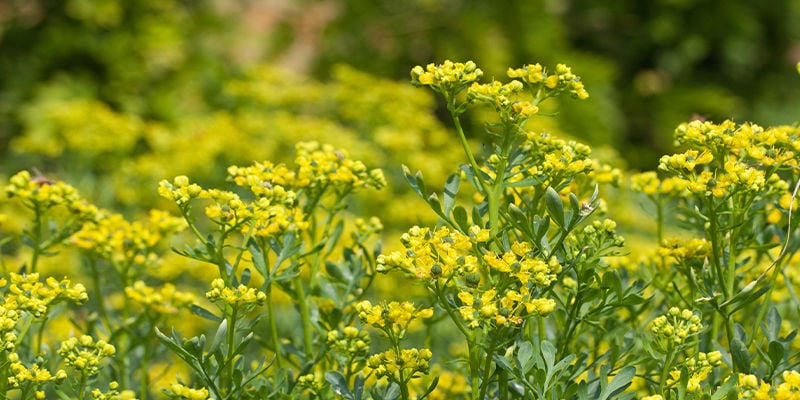
Otherwise known as rue, common rue, or “herb of grace”, Ruta graveolens is a herb with many uses, but is mostly harnessed as an ornamental plant these days. That's not to say that there aren't some other potential benefits to be had, but its strong aroma and yellow flowers make it an excellent option for those looking to add a burst of colour to their garden. But we'll get into that a little later on!
Where does Ruta graveolens come from?
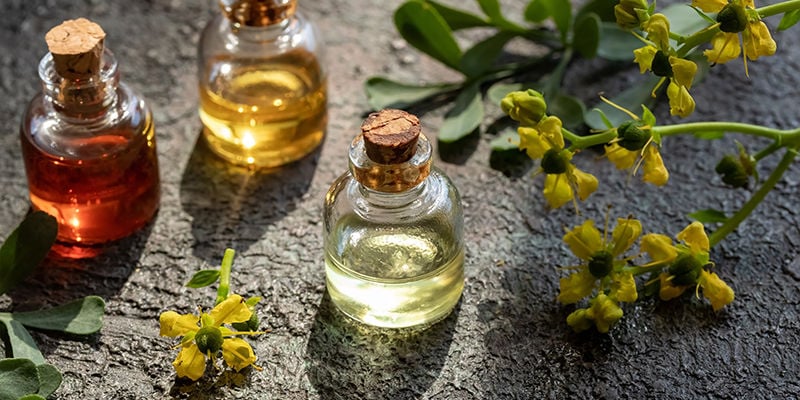
Ruta graveolens is native to the Balkan Peninsula and eastern Mediterranean region, and can be found growing in countries such as Croatia, Bulgaria, and Greece.
This herb has been used for many thousands of years. In fact, Ruta graveolens was even harnessed in the Middle Ages as a means of protection from the plague and even as a defence against witches! The ancient Greeks used Ruta graveolens as an antidote for poison. While its efficacy is hotly debated, there's no denying this herb was in high demand—and continues to be to this day—and for some great reasons.
Characteristics of Ruta graveolens
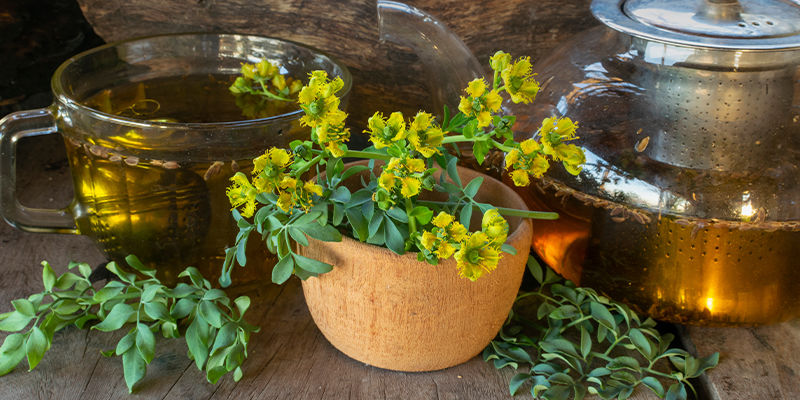
So, just what can Ruta graveolens do? As mentioned, it has been used for a range of holistic purposes for a long time. It is thought by some that this herb has the potential to alleviate symptoms of fungal infection, aid with menstrual cramps, and even treat bacterial infections. Of course, these uses date back thousands of years and are not all verified by modern science.
Ruta graveolens can also be used in meals too. It's known to have a slightly bitter taste that can complement dishes if utilised properly. However, only small amounts should be used, as this herb can cause liver damage, gastric pain, and vomiting if too much is consumed. For this reason, pregnant women should avoid eating Ruta graveolens.
For growers, Ruta graveolens is perfect for adding to your garden as it is known to be a pest, insect, and cat repellent. So if you have some pesky feline guests or some unwelcome bugs in your garden, the strong aromas of this plant could very well make all of the difference and keep them at bay.
When and how to grow Ruta graveolens
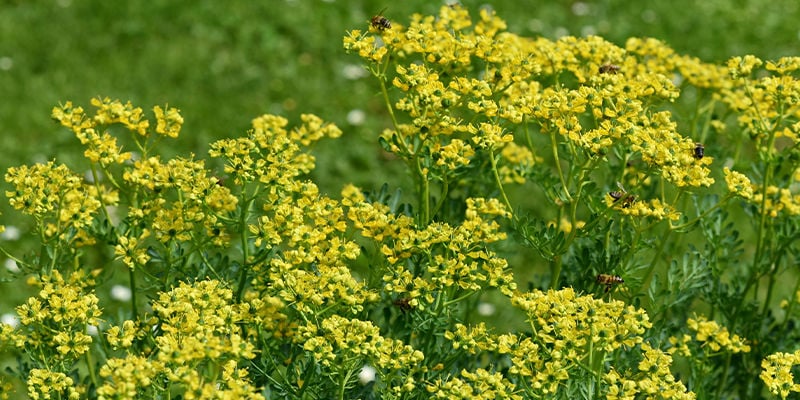
So if you're looking to cultivate some Ruta graveolens for yourself, where do you start? It all comes down to when, where, and how to sow your seeds. Whether grown in pots or directly into the ground, sow your seeds about 0.5–1cm deep in March/April. As these plants are native to slightly warmer regions, they require a temperature of around 10–18°C. Be sure to use a loose, loamy substrate, and you'll provide the perfect environment for your seeds to germinate and flourish.
Caring for your plants
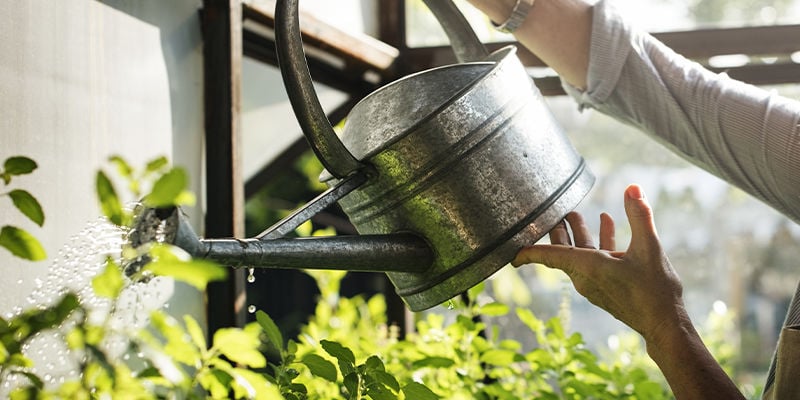
As you may have assumed by now, Ruta graveolens is a hardy and robust plant. Overall, this is one low-maintenance herb that doesn't need any special treatment other than the occasional TLC. While pruning isn't completely necessary with Ruta graveolens, you can cut away at your plant to maximise sprouting.
Watering and feeding
Of course, your plants will need a little watering and feeding to bring out the best in them. Although Ruta graveolens is comfortable in warmer conditions, the need for regular watering is still there. Be sure to do so often, but ensure they're not waterlogged. Moderation is key here. Alongside watering is feeding. Using a small amount of slow-release fertiliser, you can give your plants all the nutrients they need for their growing cycle. Timing is critical when feeding your plants, as too early can have a detrimental impact; too late, and you may miss the chance to really let plants flourish.
When and how to harvest
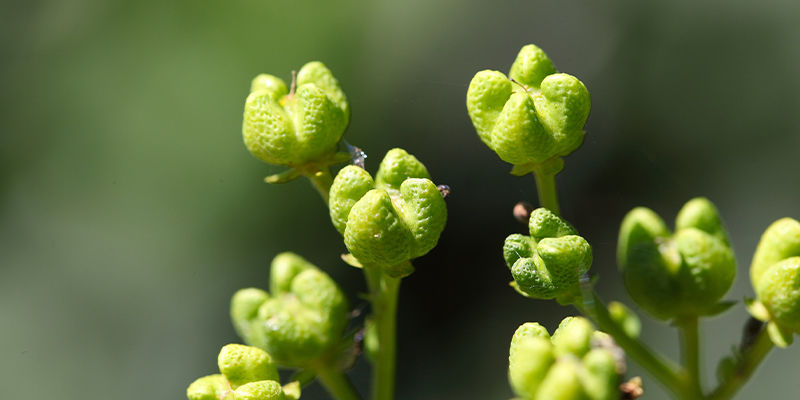
As a perennial plant, Ruta graveolens has the potential to grow continually throughout the year. Typically, if seeds are sown in March, the plant can be ready to harvest as early as May/June. It really doesn't take long to reach its full potential. You can tell the plant is ready when flowers and leaves begin to populate the plant. However, many look to harvest before the flowers appear, as the essential oils begin to diminish once they do.
Special care must be taken when collecting Ruta graveolens, as skin contact with the leaves can cause itching and, in the most extreme cases, blistering. Be sure to wear protective gloves and cut the stem with some pruning shears for a clean harvest. Once collected, you can use your stem cuttings straight away or keep them in a glass of water if you're looking for a short-term storage solution. You can also place the stems in the fridge in a sealed bag to retain freshness.
Get on the route to Ruta graveolens
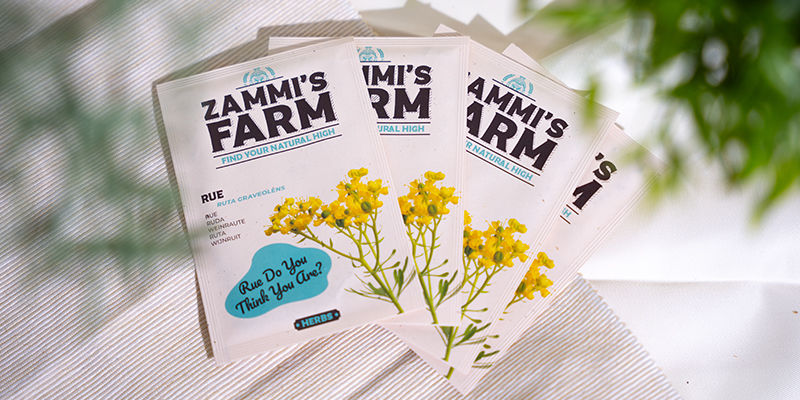
While the holistic use of this plant has changed significantly over the past thousand years, there's no denying that Ruta graveolens can still shine as an ornamental herb, and even as a culinary ingredient. As you can see, this plant is unlikely to cause any cultivation problems for even the most novice of growers, making it an accessible option for all. As a perennial plant, you can enjoy everything it has to offer year-round.
All that's left to do is check it out for yourself and get some growing in your garden, on your balcony, or in your greenhouse. Simply head over to the Zamnesia Plantshop to get your hands on some Ruta graveolens seeds for yourself!
-
 4 min
19 September 2023
5 Herbs To Help With Lucid Dreaming
If you are looking for a herbal aid to your lucid dreaming endeavours, we have the list for you. Below you will find a selection of traditional herbs all anecdotally thought to help dreamers reach...
4 min
19 September 2023
5 Herbs To Help With Lucid Dreaming
If you are looking for a herbal aid to your lucid dreaming endeavours, we have the list for you. Below you will find a selection of traditional herbs all anecdotally thought to help dreamers reach...
-
 4 min
1 September 2023
Top 10 Ayurvedic Herbs
Centred on balancing the mind, body, and spirit, Ayurvedic herbs play a crucial role in the traditional Indian holistic system of Ayurveda. To find out which herbs you should try first, keep reading.
4 min
1 September 2023
Top 10 Ayurvedic Herbs
Centred on balancing the mind, body, and spirit, Ayurvedic herbs play a crucial role in the traditional Indian holistic system of Ayurveda. To find out which herbs you should try first, keep reading.
-
 4 min
7 August 2023
7 Tips For Storing Dried Herbs
What are you planning to do with that large harvest of herbs waiting in your garden? If you feel stuck or overwhelmed, fear not! We've devised 7 key tips to help you preserve their flavour and...
4 min
7 August 2023
7 Tips For Storing Dried Herbs
What are you planning to do with that large harvest of herbs waiting in your garden? If you feel stuck or overwhelmed, fear not! We've devised 7 key tips to help you preserve their flavour and...
-
 3 min
30 June 2023
How To Grow Sprouts
Sprouts can grow from all sorts of lentils and beans, and have great nutritional value! Growing sprouts at home is incredibly easy and very rewarding. Learn how to do it below.
3 min
30 June 2023
How To Grow Sprouts
Sprouts can grow from all sorts of lentils and beans, and have great nutritional value! Growing sprouts at home is incredibly easy and very rewarding. Learn how to do it below.





 United States
United States











